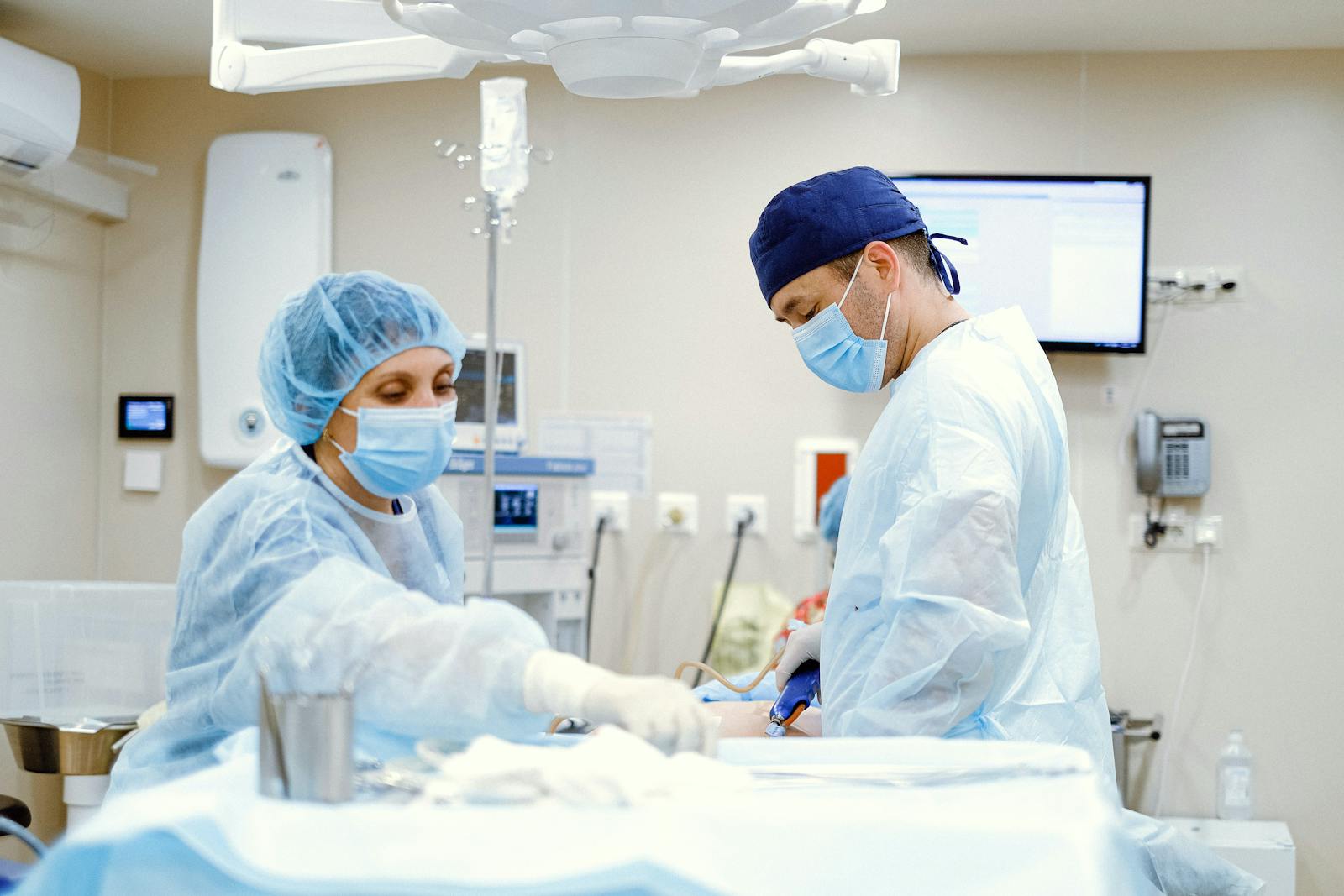Coccygectomy is a thorough operation that necessitates the excision of the coccyx or tailbone, primarily to mitigate extensive discomfort known as coccydynia. Introduced in 1861 by Jean-Antoine Villemin, this procedure is considered beneficial in instances of coccyx dislocation or fractures. However, due to the coccyx’s integral role as an attachment site for organs and the pressure-supporting structure, the surgery might pose serious risks. It’s typically a last resort solution when preventive measures or therapeutic alternatives fail. A deep understanding of the factors governing coccygectomy recommendations, along with a nuanced appreciation of risks and complications, paints an informative clinical picture.
Understanding the Term ‘Coccygectomy’
Coccygectomy, a term that may seem intricate at first glance, is a surgical procedure that involves the removal of the coccyx, also known as the tailbone, typically performed to alleviate persistent, unresponsive coccydynia or tailbone pain. This procedure has a rich surgical history dating back to the 19th century, when it was first performed by French surgeon Jean-Antoine Villemin in 1861.
With the evolution of medical science, alternative therapies have been developed to address coccydynia, often considered before resorting to coccygectomy. These coccygectomy alternatives include conservative treatments such as physiotherapy, pain management with medications, injection therapies, and manual manipulation. The choice of treatment generally depends on the severity and persistence of symptoms, the patient’s overall health, and their personal preference.
Despite the availability of these alternatives, coccygectomy remains a viable option in cases where conservative treatments fail to provide relief. This procedure is especially beneficial for patients with a dislocated or fractured coccyx. However, it is important to note that coccygectomy, like any surgical procedure, carries its own risks and may not be suitable for everyone. A thorough evaluation of the patient’s condition is essential before deciding on the appropriate course of action.
Anatomy of the Coccyx
To fully comprehend the complexity of a coccygectomy procedure, it is necessary to understand the anatomy of the coccyx, the small, triangular bone at the base of the spinal column. The coccyx, also known as the tailbone, is made up of three to five fused vertebrae and is the remnant of a vestigial tail.
- Coccyx Function: The coccyx serves several essential functions. It acts as an attachment site for tendons, ligaments, and muscles. It also serves as an integral part of the weight-bearing tripod structure of the seated body, along with the ischial tuberosities.
- Coccyx Structure: Despite its small size, the coccyx’s structure is complex. It consists of a base, a body and an apex. Its anterior surface serves as the attachment site for the levator ani muscle, part of the pelvic floor.
- Coccyx Injuries: Due to its location, the coccyx can be prone to injury. Falling on a hard surface, childbirth, and repetitive strain can lead to coccygeal pain or coccydynia. In extreme cases, an injury may necessitate a coccygectomy, the surgical removal of the coccyx.
Understanding the coccyx’s unique anatomy is critical to appreciating the challenges involved in coccygectomy and the importance of this small but vital bone.
Common Causes for Coccyx Pain
Various circumstances can lead to coccyx pain, some of the most prevalent being physical trauma, childbirth, and repetitive strain injuries.
Physical trauma, such as falls or impacts, can cause bruising, fractures, or dislocation of the coccyx. These injuries often lead to chronic pain and require a focused approach for coccyx injury prevention and tailbone trauma rehabilitation. Measures include using padded seating, avoiding activities that place pressure on the coccyx, and learning proper techniques for lifting heavy objects.
Childbirth can strain or displace the coccyx, causing pain. The pressure exerted on the coccyx during labor can lead to bruising or fractures. Postnatal care often involves pain management and exercises to restore pelvic floor strength and alleviate coccyx pain.
Repetitive strain injuries, common in activities that require prolonged sitting or repetitive movements, can lead to coccydynia, a condition characterized by coccyx pain. Muscles and ligaments around the coccyx may become strained, inflamed, or worn out. In these cases, coccyx injury prevention involves regular breaks from sitting, use of ergonomic seats, and exercises to strengthen the pelvic muscles. Tailbone trauma rehabilitation may include physical therapy and pain management techniques.
Diagnosing Coccyx Problems
When coccyx pain persists despite preventive measures and rehabilitative efforts, a thorough diagnostic process becomes necessary to accurately identify the underlying issue. This procedure may entail several coccyx imaging techniques and differential diagnosis methods.
- Physical Examination: Medical practitioners will often begin by conducting a physical examination of the area to check for any visible signs of discomfort or injury, such as swelling, bruising, or deformities. This might also involve a rectal exam to assess the coccyx’s position and mobility and identify any pain trigger points.
- Coccyx Imaging Techniques: To get a more detailed view of the coccyx, several imaging techniques may be used. These include X-rays, computed tomography (CT) scans, and magnetic resonance imaging (MRI). These techniques can reveal fractures, dislocations, tumors, or other abnormalities that might be causing the pain.
- Differential Diagnosis Methods: These help to rule out other possible causes of the pain, such as nerve damage, infections, tumors, or spinal conditions. This might involve additional tests, like blood tests or nerve conduction studies.

When Is Coccygectomy Recommended?
In the domain of medical interventions for persistent coccyx pain, coccygectomy, the surgical removal of the coccyx, is considered when other treatments have failed to alleviate discomfort and the quality of life is greatly impacted. The decision to proceed with this surgical intervention is taken after careful evaluation of the patient’s medical history, current symptoms, and the results of previous treatments.
When conservative treatments such as medications, physical therapy, and nerve blocks are ineffective, and the pain remains intractable, coccygectomy may be recommended. The procedure is specifically indicated for conditions like coccydynia, which is characterized by severe, disabling pain at the tailbone. Similarly, for patients with an unstable coccyx due to trauma or childbirth, coccygectomy may be the most viable option.
Before recommending coccygectomy, physicians often consider surgical alternatives. These could include less invasive procedures such as ganglion Impar blocks or coccygeal manipulation. The choice between coccygectomy and these alternatives depends on a multitude of factors including the severity of the condition, patient’s overall health, and potential for recovery.
Insurance coverage also plays a pivotal role in the decision-making process. As coccygectomy is a major surgery, it is crucial to verify beforehand whether the insurance plan covers this procedure, to avoid unexpected expenditure.
Preparing for a Coccygectomy
As we advance to the topic of preparing for a coccygectomy, two key areas require our attention: Pre-Surgery Health Evaluation and Post-Operation Recovery Plan. These areas encompass essential processes such as evaluating the patient’s overall physical condition prior to the surgery and devising a detailed recovery strategy post-surgery. An in-depth understanding of these elements is critical to facilitate effective execution of the procedure and to guarantee a smooth recuperation phase.
Pre-Surgery Health Evaluation
Before proceeding with a coccygectomy, a thorough health assessment is essential to guarantee the patient’s readiness for the surgical procedure. This evaluation involves an in-depth examination of the patient’s underlying and pre-existing conditions, which may influence the surgery’s outcome and the patient’s recovery.
The evaluation typically includes:
- Comprehensive Physical Examination: Physicians will perform a detailed physical examination to make sure the patient’s body can cope with the surgical stress.
- Medical History Review: A thorough review of the patient’s past medical records, focusing on pre-existing conditions that may complicate the surgery or recovery.
- Lifestyle Modifications: The doctor may recommend changes to the patient’s lifestyle, such as diet or exercise, to prepare the body for the upcoming surgery and enhance post-surgical recovery.
Each component is vital to guarantee a safe and successful coccygectomy.
Post-Operation Recovery Plan
Developing a comprehensive post-operative recovery plan is an essential step in preparing for a coccygectomy, ensuring that patients have a clear understanding of the recovery process and what to expect after the surgery. Key elements of this plan include Nutritional Support and Rehabilitation Exercises.
Nutritional support aids in promoting wound healing and muscle regeneration. A diet rich in proteins, vitamins, and minerals is recommended, with emphasis on balanced hydration. Rehabilitation exercises, guided by a physiotherapist, are vital in optimizing mobility and reducing the risk of post-operative complications. These exercises, tailored to individual patients, aim to restore strength and flexibility. Regular follow-ups with the surgical team are also crucial to monitor healing and address any concerns swiftly.
The Coccygectomy Procedure Explained
During a coccygectomy, the surgeon meticulously removes the coccyx, also known as the tailbone, to alleviate persistent pain and discomfort that conservative treatments have failed to address. This procedure requires precision and delicacy, as the coccyx is located in a region with numerous critical structures. The surgical instruments used include a scalpel, curette, rongeur, and a bone nibbler.
Patient’s mental preparation is vital prior to the procedure. Understanding the surgery’s purpose, process, and potential outcomes helps reduce anxiety and encourages cooperation.
The coccygectomy procedure typically entails three key steps:
- Anesthesia: The patient is either put under general anesthesia, or a regional anesthesia is administered to numb the lower body.
- Surgical Incision: A small incision is made at the base of the spine to expose the coccyx.
- Coccyx Removal: The surgeon carefully removes the coccyx using surgical instruments, ensuring surrounding tissues and nerves are preserved.
After the coccyx is removed, the incision is closed with sutures, and the area is bandaged. This detailed explanation should provide a clear understanding of the coccygectomy procedure, laying the foundation for the next topic—’Risks and Complications of Coccygectomy’.
Risks and Complications of Coccygectomy
Having understood the surgical process of coccygectomy, it is equally important to discuss the potential risks and complications associated with this procedure. Similar to other surgical interventions, coccygectomy carries a certain degree of risks, including infection, bleeding, and adverse reactions to anesthesia.
Infection prevention is vital for any surgical procedure, including coccygectomy. Despite stringent sterilization protocols, surgical site infections can occur. These infections can be superficial involving the skin or deep involving tissues under the skin, organs, or implanted material. Timely diagnosis and intervention are essential to prevent serious complications.
Significant bleeding, though rare, is another risk associated with coccygectomy. It may necessitate blood transfusion or even lead to hematoma formation, a condition where blood collects outside the blood vessels.
Anesthesia-related complications, such as allergic reactions or respiratory problems, can also arise during or after the procedure.
Post surgical mobility can be affected in some patients after coccygectomy. These patients may face difficulties in sitting comfortably for extended periods or performing certain movements. This is usually temporary and improves over time with appropriate physiotherapy and pain management.
Recovery Process After Coccygectomy
Shifting gears to the post-operative period, the recovery process after a coccygectomy can vary greatly based on the individual’s overall health, age, and the body’s natural healing ability. The recuperation period generally lasts several weeks, during which the patient will gradually regain mobility and functionality.
Physical therapy benefits are manifold during this period, assisting in improving strength, flexibility, and minimizing potential complications. A well-structured physical therapy program can hasten the healing process and provide the patient with increased confidence in their physical abilities post-surgery.
Emotional wellbeing post surgery is another vital facet of the recovery process. Often overlooked, the psychological impact of surgery can significantly impact a patient’s recovery.
In order to highlight the importance of these aspects, consider the following:
- Physical therapy benefits not only the body but also the mind, fostering a sense of achievement and progress.
- Emotional wellbeing post surgery is pivotal to maintaining a positive mindset, which can directly influence the speed and efficacy of recovery.
- The body’s natural healing ability, influenced by age and overall health, plays a substantial role in determining the length and success of the recovery process.
Effective Pain Management Strategies
While the recovery process holds its essential challenges, managing post-operative pain effectively is an intrinsic component that can greatly enhance the patient’s comfort and expedite the healing process. Understanding the pain perception differences among patients is vital in formulating a personalized pain management plan. Patients’ perception of pain can be influenced by various factors including age, sex, culture, previous pain experiences, and psychological state.
A range of analgesic options is available for post-operative pain management. Non-steroidal anti-inflammatory drugs (NSAIDs) can be used to alleviate mild to moderate pain. For more severe pain, opioids may be employed, although they come with a risk of dependency and side effects. In some cases, local anesthetics may be used to numb the surgical area, providing temporary relief.
Adjuvant analgesics, such as certain types of antidepressants and anticonvulsants, are another option. They can enhance the effects of other analgesics and are particularly effective at managing neuropathic pain. It’s important to remember that the choice of analgesic and its dosage should be carefully selected based on the patient’s specific condition and tolerance. Regular pain assessment is essential to monitor the effectiveness of the pain management strategy and make necessary adjustments.
Long-Term Outlook Post-Coccygectomy
The long-term prognosis following a coccygectomy largely depends on various factors including the patient’s overall health, the extent of the coccyx damage, and the effectiveness of post-operative rehabilitation strategies. Coccygectomy cost factors also come into play. For instance, the complexity of the surgery, the surgeon’s experience, geographical location, and possible hospital stay can have a considerable impact on the final cost.
- Emotional wellbeing post coccygectomy: This is a critical aspect often overlooked. Dealing with pain and limited mobility can lead to feelings of anxiety and depression. It is essential to have a strong support system and professional counseling if necessary.
- Rehabilitation: A well-structured and personalized rehabilitation program is crucial for achieving excellent results. This includes physical therapy to restore strength and mobility, as well as pain management techniques.
- Follow-up care: Regular follow-up visits allow the healthcare team to monitor the patient’s progress and make necessary adjustments to the treatment plan. These visits also provide an opportunity to address any concerns or complications that may arise.
Frequently Asked Questions
What Kind of Specialist Should I Consult for Coccygectomy?
For coccygectomy, consult an orthopedic surgeon, specializing in spinal surgeries. These professionals manage coccygectomy complications and provide aftercare post coccygectomy, ensuring best possible recovery and minimizing potential post-operative issues.
Are There Any Alternative Treatments to Coccygectomy?
Yes, there are alternatives to coccygectomy. These include non-surgical treatments like pain management strategies, physical therapy, and medications. However, each option has its own set of benefits and coccygectomy risks to take into account.
Can Coccygectomy Affect My Mobility or Ability to Carry Out Daily Tasks?
Yes, coccygectomy can temporarily impact mobility and daily tasks due to post-surgical pain. Pain management post coccygectomy is essential. Potential complications like infection or prolonged recovery may also affect normal functioning.
Is Coccygectomy Covered by Insurance?
Whether a coccygectomy is covered by insurance is dependent on specific insurance criteria and often necessitates a pre-approval process. It is crucial to consult your insurance provider for accurate coverage information for this procedure.
How Much Does a Coccygectomy Procedure Usually Cost?
The cost of a coccygectomy procedure varies greatly, usually ranging from $15,000 to $50,000. This includes fees for hospital stay, anesthesia, and surgeons, as well as potential costs for coccygectomy recovery period and post-surgery complications.


